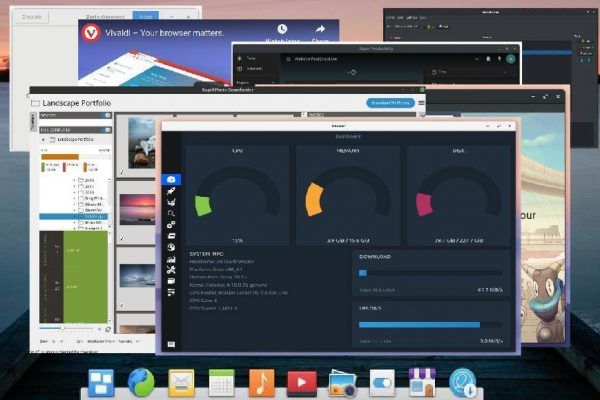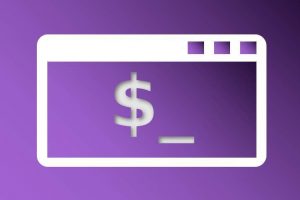Time flies, especially if the past year was busy like mine, and not always in a good way. In my previous article I shared a bit about the reason why I was absent for months on www.realinuxuser.com, but now I am back again with a refreshed spirit and energy and time to do things for myself that I value, like and enjoy. For many of us, December is a kind of a point of reflection, to look back at all the things that happened to us, but also a good time to look forward to what will come. As I did for the previous years, I also want to look back at my Linux experiences and share with you my favorite applications for Linux in 2021. As a Linux blogger I look at and try out a lot of different software solutions and I always do my best to write useful and valuable articles that hopefully help you in your decision making on software selection or just help to explain how applications work, how problems can be solved, or how software can improve your life. Out of all the applications I tried in 2021, a substantial list of applications have my real preference over other applications and I therefore regularly use them for my personal work, productivity, creativity and whatever I further do with my Linux based setup. So in this article I will share my 40 most favorite applications for Linux in 2021.
The past
The last year and a half or so was very hectic for me with much less time for my wife, my family, friends, hobbies, exercise, etc, compared to other years. In my previous reflective personal insight “It has been a while“, I gave you a peek into the reasons why. Especially the last months I did not have the time and energy to write for this website, but I really missed it. But although I did not write, I of course kept using my Linux based computers for personal use, so I still have something to say about applications for Linux, both golden oldies and new ones, and both open source and closed source apps. Not everyone is agreeing with me, but for me personally I don’t mind using closed source applications on my Linux machines, although I always look for open source solutions first. I am not an open source purist and if there are applications which don’t have a good open source alternative, or if they are just a better fit for my personal use case, then I don’t mind using these as well. And I still believe that Linux can grow in popularity if people see that a lot of their familiar applications also run on Linux. That makes the switch a bit easier and after that maybe their interest for open source alternatives will grow as well.
The future
In 2022 I want to focus even more on series of articles and creating courses, instead of only creating stand-alone articles, like tutorial series on darktable and DaVinci Resolve. But I also want to finish my free course on Zorin OS, a distribution which is in my opinion the best starting point for switchers, but also a powerful and robust platform for current experienced Linux users. Further I am still hoping to someday finish my first book, but maybe I am changing the main focus in the book from Linux Mint to Zorin OS, but I am not sure yet. And when I finish this book, maybe I can convert it to an online course, which is another dream of mine. Further I am thinking about publishing a monthly newsletter, but I am not sure if you see any value in this and want to subscribe for something like this. And I want to include you more in the content of this website as well, and one of the things I was already thinking about is to give you the possibility to write about your personal setup and Linux experiences, and give you a place on this website. And you know what, the first article “A non-technical Linux user’s tale” by one of my readers has been published very recently.
So now that we are almost at the end of 2021, it’s time to share my most favorite Linux applications that I tried out and used extensively in 2021. These are all applications that I am very satisfied with and really use in a productive way frequently at least on a weekly basis, but often on a daily basis, or that I recommend to the people around me. I hope you will find some inspiration from my list as well. So here are my 40 most favorite applications for Linux in 2021.
My 40 most favorite applications for Linux in 2021
For me, the application is not a goal in itself, but what you can do, create or achieve with it is in my opinion much more important. For these so-called use cases I am constantly looking for the best available solutions and therefore it may be that I change applications over time, depending on new findings and improved applications. And therefore some of the software on my list of 2020 is maybe a bit different when compared to the software that I preferred to use in 2021. Some of the applications have remained the same, but some have had to give up their place for something different. But change is not a goal in itself and I always want to give an application or software solution a real chance and try it extensively before I decide to keep it or look for an alternative solution. Below you will find the categories, subcategories and the application names of use cases for which I will share my favorite applications for 2021:
Operating system
- Linux distribution – Zorin OS 16
File management
- File finder – Albert
- Duplicate file finder – FSlint
System optimization
- System Optimization and Monitoring – Stacer
- Laptop battery optimization – TLP
- Application startup optimization – Preload
Safe keeping
- Password management – Bitwarden
- Backup system data – Timeshift
- Backup personal data – luckyBackup
Internet and communication
- Internet browsing – Firefox
- Email – Thunderbird / BlueMail
- RSS Feeds – NewsFlash
- Mobile integration – Zorin Connect
- Messaging – Telegram
Productivity
- Office functionality – LibreOffice
- To Do – Super Productivity
- Personal project management – Zenkit Base
- Note taking – Joplin
Creativity
- Color Management – DisplayCAL
- Photo and video import – Rapid Photo Downloader
- Photo management – digiKam
- Photo RAW editing – darktable
- Traditional film processing but digital – Filmulator
- Image manipulation – GIMP
- Video editing – DaVinci Resolve / Shotcut
- Video Conversion – WinFF
- Desktop publishing – Scribus
- Vector drawing – Inkscape
- Artistic drawing – Krita
- Book writing – Manuskript
Tools
- Reduce eye strain – SafeEyes
- Screenshots – Shutter
- PDF Reader – Evince
- PDF Editor – LibreOffice Draw
- Music management – Clementine
- Home administration – Homebank
Learning
- Zettelkasten – Zenkit Hypernotes
- Mind mapping – Minder
- Take breaks – Go For It!
Development
- Coding – Visual Studio Code
Operating System
Linux distribution – Zorin OS 16
I want to start with my operating system of choice. Back in 2018 for me the absolute winner was Linux Mint, because this was the Linux distribution that helped me make the switch to this beautiful Linux world. But in my continuous search for topics to write about, I also tried other Linux distributions, so in 2019 I shifted to Zorin OS 15, which had a clear impact on me and became my daily driver. And currently, Zorin OS 16 is my daily driver, because I personally think that Zorin OS adds some real value added extras and finesse in terms of user-friendliness, look and feel, completeness, flexibility, integration and interaction.
Here is a nice promotion video that shows some key features of Zorin OS (Zorin OS 15, so not the latest version). The style of the video is also an indicator for the modern, minimalist and flat design style that you will also find in Zorin OS.
You can download the free Zorin OS 16 Core edition or one of the other variants via the Zorin OS download page.
When you like to read some more on Zorin OS, then please check once in a while my Zorin OS beginners tutorials series, which is still in progress but already has some nice articles available. For 2022 my goal is to finish this complete tutorial series, based on Zorin OS 16.
Note:
Next to Zorin OS I always had a soft spot for elementary OS. The Linux distribution elementary OS always keeps the minds busy, both positive and negative. There are very strong opinions about this somewhat different Linux distribution. I personally think it is a beautiful distro, but I think it is not the right distro for a beginning switcher anymore. The simplistic approach has made things actually more complex instead of simpler: for example the application offering model the elementary team has chosen, makes things unclear for beginners, as they only see a handful of curated apps when they open the appcentre. Although simple to do, without knowledge on how to integrate additional offerings like Flatpak and Snap, or the installation of Eddy. switchers think there is only a very small selection of applications available, while the appcentre should be an important complete hub where people should be able to find everything from the first time they start the operating system.
File Management
File finder – Albert
A few years ago I completely switched from Apple’s macOS to Linux and since then I haven’t looked back. And although I am now a dedicated Linux user and enthusiast and write with passion about it on my website, it does not mean that I can no longer see and appreciate the qualities of the Apple products, both hardware as well as software. One of these Apple solutions that I and many others with me can appreciate is Spotlight. But don’t worry, for Linux there are more of these types of applications available, like Mutate, Krunner, GNOME Do and Ulauncher. But personally I think Albert is best, which has the same look and feel as Apple Spotlight.

Even though Albert cannot be fully compared with Spotlight, there are still many features that are similar and some even more polished that makes Albert a great Spotlight alternative for Linux. With Albert you have a simple starting point or a quick launcher, that can be activated via a simple key combination, to find, access or start all your own applications, files and folders and their paths, but also finds bookmarks and helps you to browse the web in a focused way.
You can read more on Albert in my article “Albert is a good Spotlight alternative for Linux“.
Duplicate file finder – FSlint
Most people probably know it: the more space you have, the more junk you collect. This applies to our houses, our garages, but of course also to our digital world. Storage is becoming cheaper and cheaper so it is becoming less and less important to monitor whether we are using our storage capacity optimally. We just buy a new hard drive when we run out of space. But for a while now I am becoming more and more interested in minimalism and simple living, without distraction and things I don’t need, and that includes a tidy digital life as well. One of the aspects that is important when cleaning up your digital life is finding out if you have unnecessary duplicate files on your storage media. When you use Linux, one of those free and open source tools that you can use in the cleaning process is the application FSlint.
FSlint’s primary focus is on finding duplicate files on your hard drives. But if you found duplicate files then you probably want to do something with them, for example, collecting and then deleting the unnecessary files. FSlint makes it possible to easily identify a location, such as a complete hard disk or a specific folder, and then search for duplicate files there. When these have been found, you can determine which files you want to remove or maybe merge. You just have to select the result files and choose the option Delete or Merge. But FSlint can do much more than search for duplicate files. Think about searching for temporary files or empty directories.
You can find more on FSlint here:
System Optimization
System Optimization and Monitoring – Stacer
Making clutter is easier than cleaning up clutter. Making a mess happens naturally to many people, but cleaning up the mess requires a bit of discipline. And this works better for one person than for another, so if there is some help out there that makes the job easier, that would be a great gift for a lot of us. Due to the fact that I try out many applications and settings as a foundation for writing my posts, the chance of an abundance of digital clutter on my Linux system is very likely. At a certain moment you no longer know what you have and have not installed and whether you have removed everything you no longer need correctly and completely. In addition, I also have a need to see how my system is performing after a period of intensive use. One of the applications for Linux that people like you and me can support in this process is Stacer. In my opinion, Stacer is in my opinion the best and most user friendly system optimizing and monitoring tool for Linux. And it is an example of what in my opinion good design looks like in the Linux world.
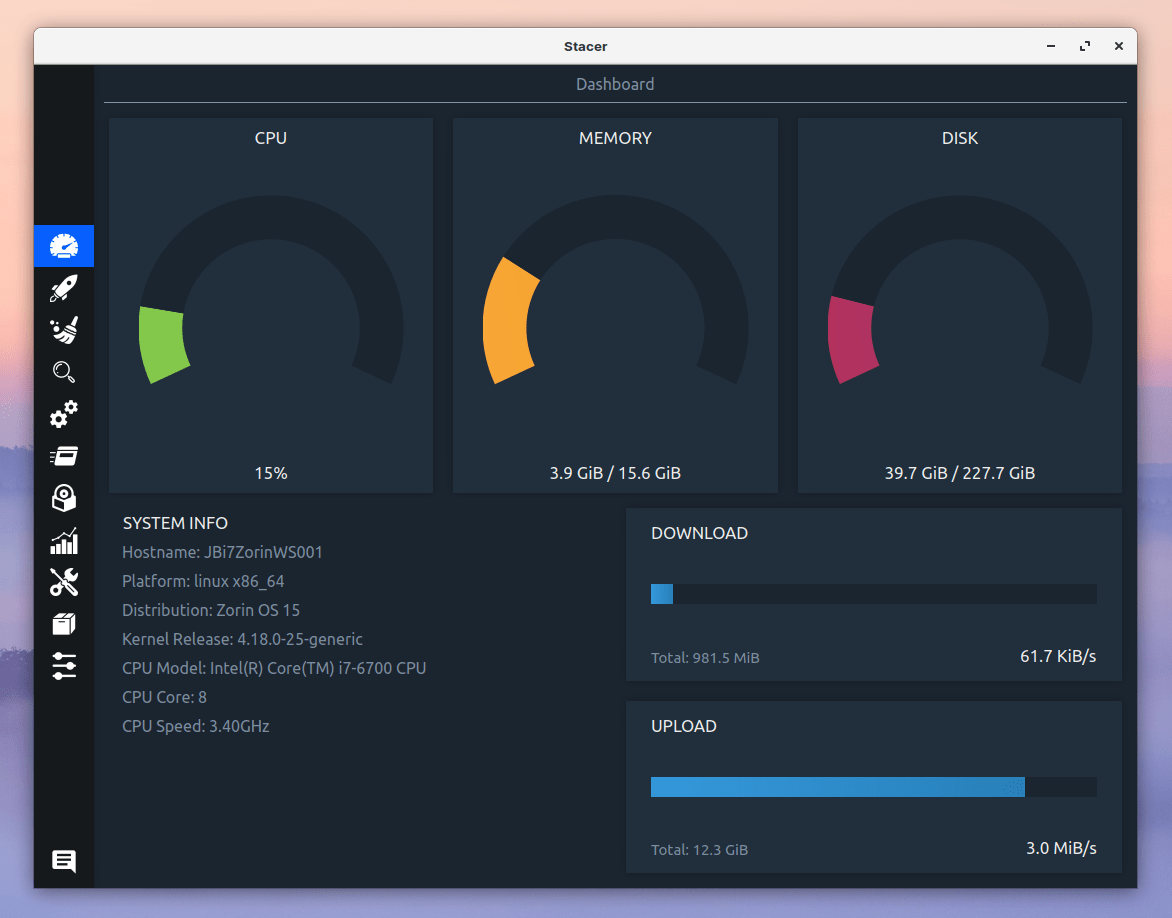
Stacer is an application heavily based on a graphical user interface with the aim of offering an extensive set of both cleaning and system monitoring functionalities for the Linux user. By using an accessible and beautiful user interface, Stacer wants to make the process of cleaning and monitoring easier for the average user. But also the experienced user can easily make this tool part of his or her Linux based workflow.
Read more about Stacer in my article “Stacer is the best system optimizing and monitoring tool for Linux“.
Stacer is the best system optimizing and monitoring tool for Linux
Laptop battery optimization – TLP
The Linux operating system is really great, since it is stable, robust, modern, user friendly and therefore it can easily compete with the established operating systems and even surpass them at some points. But linux is not equally strong at all points. One of the areas that deserves more attention is battery life when running on a laptop. Most Linux distributions are out of the box not really optimized to get the most out of your laptop. On a desktop you don’t need to improve battery life of course, but on your laptop you should give some attention to optimize your power consumption, so you can use your machine as long as possible during the day. Up till this very moment it has never been possible to squeeze as many hours out of a Linux based laptop as compared to macOS and Windows based machines. But things can be improved with an application like TLP.
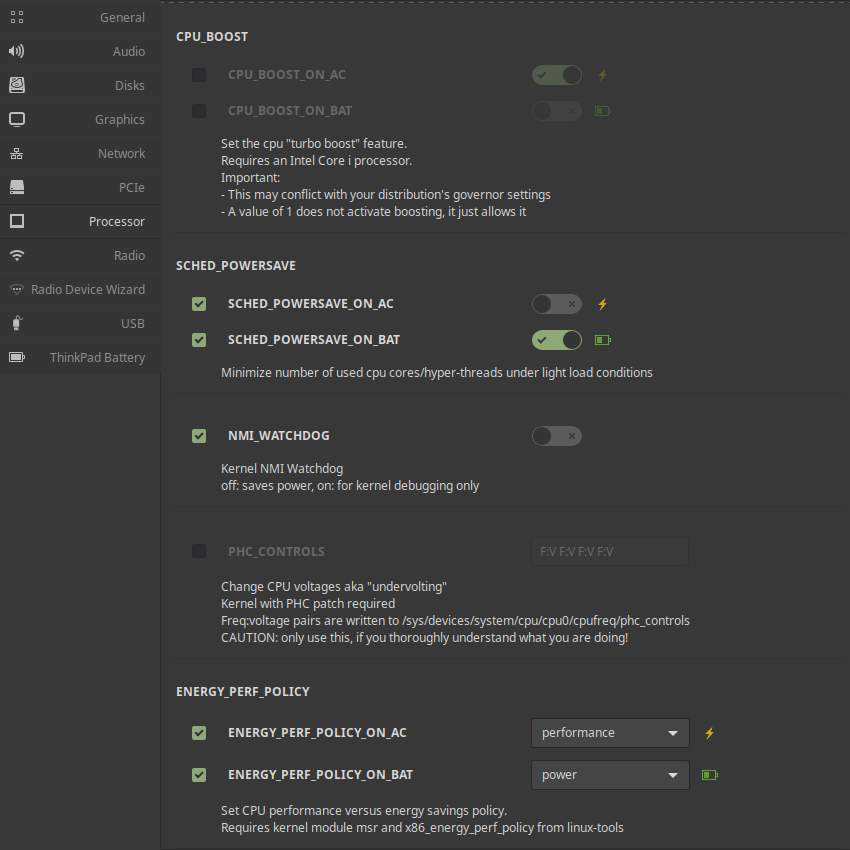
TLP is a very extensive software solution, but the nice thing is that it offers out of the box a default configuration already optimized for most machines. But on top of that default setting there is a lot to adapt to fulfill your specific needs. TLP gives you all the required functions to tweak your components like the processor, hard disks, wireless components, network devices and graphics and sound devices. Think about processor frequency scaling, power aware process scheduler for multi-core and hyper-threading, wifi power saving mode, hard drive advanced power management, audio power saving and Input/Output schedulers.
If you want to read more about TLP and how to install it and use it, read my article “How to improve battery life on Linux laptops with TLP“.
Application startup optimization – Preload
You all probably have seen that some applications start slower than others. There are many reasons for this behavior, like the size of the application and the package type. If you want to have a faster start up time for your favorite apps it can be wise to start these apps from memory and not from disk. Of course every application must start initially from disk, but what if you can preload these applications before you actually choose to start them. When already in memory you will see a significant speed bump when starting your apps. To do this you can install the application Preload.
Preload is what they call in technical terms a daemon. This daemon is active in the background of all your processes. Preload is a nifty application that becomes better after a while, because it monitors what apps you use most. Based on that behavior it expects that you will use these apps also more than others in the future. Based on that it chooses to bring some apps already into memory for you. This should have a noticeable improvement for start up time.
Installation of Preload is simple, but you need to use the command line. Open your Terminal with keyboard combination Ctrl + Alt + T and copy the following command into it:
sudo apt-get install preload
Now power off your system and startup again. From now on Preload runs in the background monitoring your behavior. It sounds more creepy than it actually is, because this behavior is not shared with parties that shouldn’t have your data.
Safe Keeping
Password management – Bitwarden
There are a lot of password managers available. The minimum requirements for me are that I can use a password manager both online and offline, that it should run on all platforms available including Linux, that it syncs my data, and that it offers good encryption out of the box. In 2020 and the years before that my first choice was Enpass. In my opinion Enpass is still a great powerful password manager that is offered for free for desktop operating systems. But in my search for open source alternatives I found the password manager Bitwarden. I tried it and I was sold. This application looks great, has good solid functionality, is reliable, is available on all known platforms, syncs between these platforms and is highly praised by security experts.
You can find more on Bitwarden here:
https://bitwarden.com/
To download and install Bitwarden look in the Flathub store or in the Snapcraft store, or download it as AppImage from the Bitwarden website.
Backup system data – Timeshift
In my opinion the application Timeshift is superb for backup and restore of your system files. Timeshift works on the basis of incremental backups. The first time, when there is nothing backed up yet, Timeshift will have to make a full initial backup of course, but from then on Timeshift only looks at the modified files and then only makes a backup of those changes. The advantage of this approach is that these follow up backups are much faster, since the number of files that are in scope is much smaller. But also the amount of storage needed is much smaller.

Timeshift is not meant for every backup situation, because if you don’t think wisely about your backup strategy for Timeshift, it also unexpectedly recovers your personal data in for example your Documents, Videos or Pictures folder from another moment in time, so you lose the latest updates on the files you created. To backup and restore your individual personal files, such as text documents, spreadsheets, photos and films, it is advisable to use another backup application such as LuckyBackup or Cronopete. That is also the reason why Timeshift excludes your home folder and all sub folders by default and you have to actively indicate to include it in the backup scope if you want to go against this advice. But for securing your system implementation, Timeshift is a perfect solution, as it enables you to recover your whole system to another moment in time, when something really went wrong. Perfect for those who like to experiment a bit.
Ready my article “How to use Timeshift to backup and restore Linux Mint” for more in depth information on Timeshift.
How to use Timeshift to backup and restore Linux Mint
Backup personal data – luckyBackup
Please think about a backup strategy for your personal files. The question is not if your hard disk will break once or not, but when it will actually happen. And you want to be prepared for that. Every hard disk, SSD, etc, has a limited lifespan and the moment it stops working is always at an unexpected and undesirable moment. So be aware of that and act on it. For my personal files I have some specific requirements, like being able to directly read (without needing the backup software) my backed up files, write different sources to different targets, activate or deactivate parts of the backup procedure as needed, set up and use the software completely within a graphical environment. For me the application luckyBackup fits all those needs perfectly. As a long time user without any issues I can highly recommend luckyBackup.
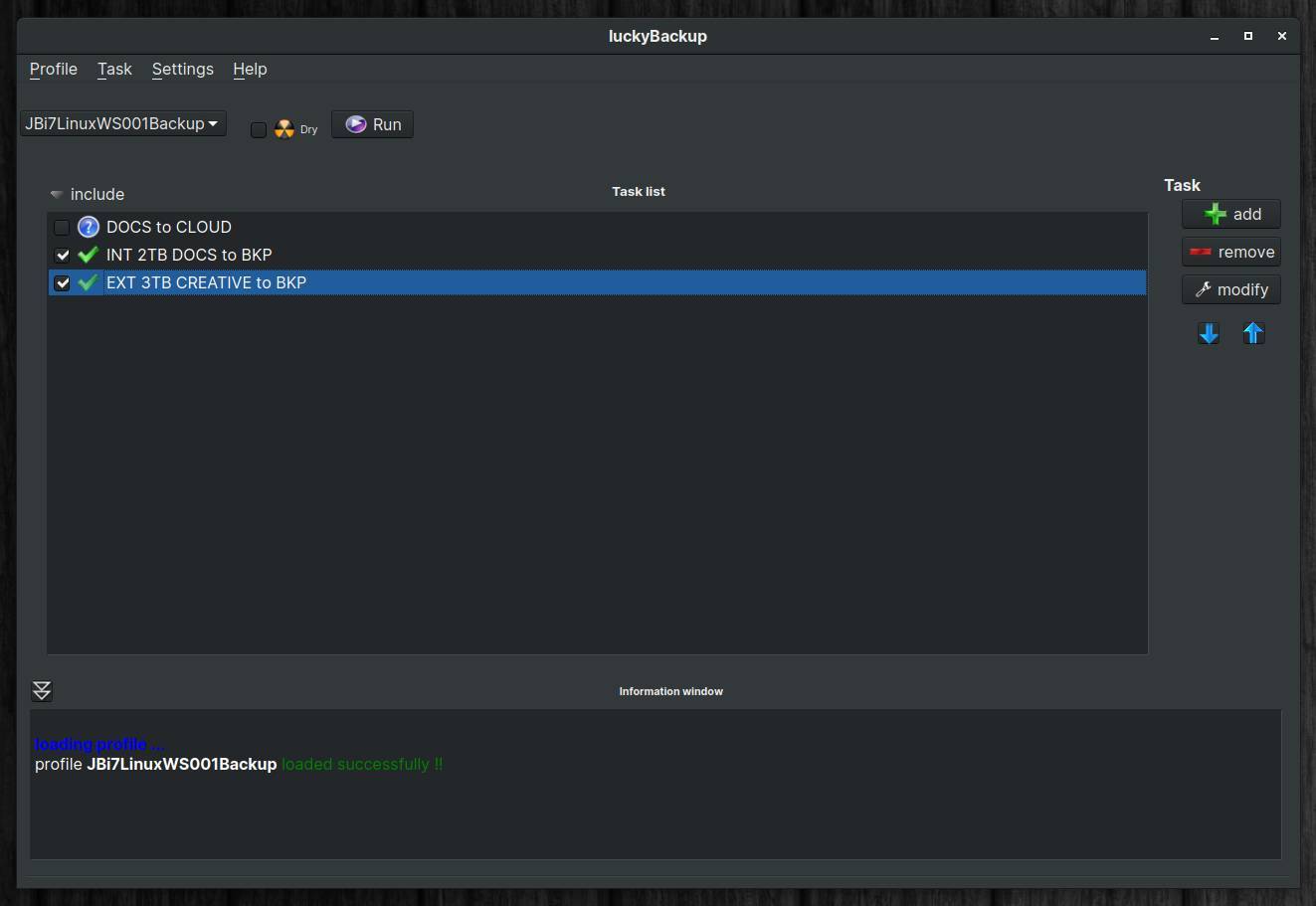
Read my blog post “luckyBackup is a powerful backup solution for linux” for more information on luckyBackup.
You can also read more on generic backup strategies in my article “How to design your perfect backup strategy for Linux“.
Or have a look at my Linux Mint or Zorin OS focused articles “How to setup and use backups in Zorin OS” and “How to setup and use backups in Linux Mint“.
Internet and Communication
Internet Browsing – Firefox
I am not sure what it is, but in the past years I continued switching browsers. A lot of browsers have some unique features, their own look and feel, the way they handle and present favorites, the way they synchronize, etc. And there seems not to be that single solution that ticks all my boxes. But despites all those differences, my browser of choice for the year 2021 is Firefox, although also not being the perfect browser. But Vivaldi still has a place in my heart.
For me personally there is an important argument for using Firefox. One of the problems is that browsers like Vivaldi, but also popular browsers like Brave, are based on the same engine that Google’s Chrome is built on. When we all use browsers with that same engine this could finally mean that Google has complete monopoly on how the internet works as they can add web technologies that support their own business model and on the other hand, they may decide to simply not include non-Google web technologies in this engine. And since most people use browsers with this engine, Google has a lot of influence on what is and what is not possible on the internet. To counterbalance the growing monopoly of Google, we could make more use of alternative web technologies such as Firefox offers. The same is explained very well by one of my favorite Linux YouTube channels, The Linux Experiment, in the following vlog post:
Email – Thunderbird / BlueMail
I am not sure why, but I am always looking for better email functionality. Thunderbird is still my primary email application under Linux, but I see all these smart functionalities in the modern email apps on our mobile devices that I hope will be included in Thunderbird as well. For me the strength of Thunderbird is the old-skool setup with the always visible columns for the Subject, Correspondent, Date, etc, which is very convenient in sorting and for example deleting in bulk in a fast manner. But I am very charmed by the application BlueMail, which is available for Linux as well, but also on Android and iOS, which offers some smart tools to make life easier. Like with MagicSync you can sync your accounts and settings between your active device and any new device by just generating and sharing a sync code. And what about integrated Kanban functionality to organize emails in different stages to be picked up. Both Thunderbird and BlueMail have some strengths and weaknesses, so I hope that one day one of these tools has all the good things of both worlds.
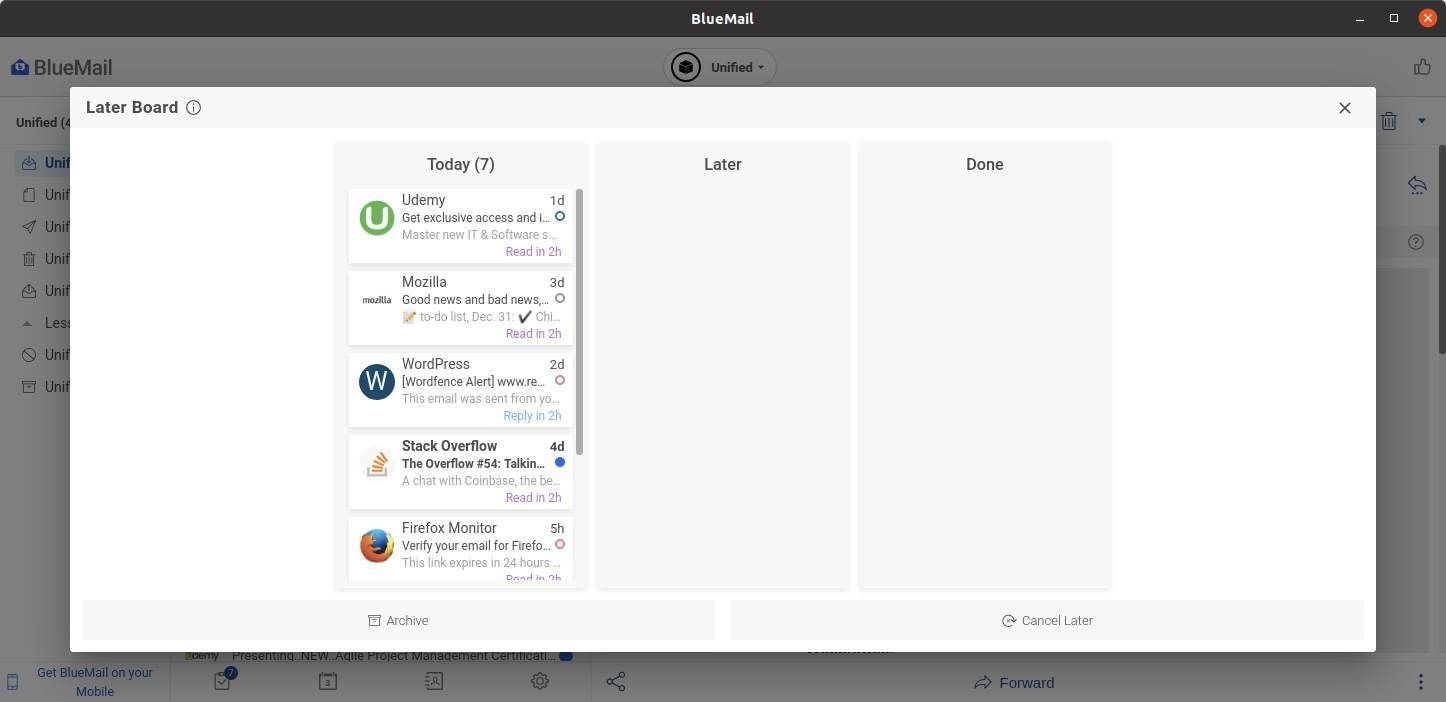
For more information on BlueMail you can read my article “How to get email done with BlueMail for Linux“.
RSS Feeds – NewsFlash
We all have our favorite websites and blogs, of which we like to stay informed about new publications. When you follow a lot of websites and you want to know about updates frequently, it is almost impossible to stay up-to-date for all of them manually. If you visit these websites frequently to look for updates, you probably find that only a small number of them have been updated, but most of them not. This will cost you a lot of time that you could use in a better way. Ideally, you want to be automatically notified when there is an update on the websites you follow. This is possible with an RSS feed reader.
Currently my personal favorite Linux based RSS Feed Reader is NewsFlash. There are a lot of good solutions available for Linux, but for me a powerful option in NewsFlash is the Discover functionality. In a lot of other RSS Feed Readers you need to manually provide the complete RSS web address, which is not always according to just one standard. When you want to follow my website www.reallinuxuser.com (of course 😉), the RSS address is www.reallinuxuser.com/feed. But other websites use for example /feeds, or something completely different. And for some websites you can simply subscribe to an RSS feed and for other websites it is there but you are not being informed about the RSS possibility. That’s why I really like the Discover functionality in NewsFlash, because you can just type a part of the website you want to follow and NewsFlash finds the available RSS feed link for you, or just type something like “Linux”, and you will get a list with sources that have the word Linux included. This makes life much easier.
Read my article How to follow your favorite websites with the NewsFlash RSS Feed Reader for Linux to get some more details.
How to follow your favorite websites with the NewsFlash RSS Feed Reader for Linux
Mobile integration – Zorin Connect
Zorin Connect is a software solution that provides convenient and intelligent functionality to integrate your Android mobile phone and your Linux Zorin OS based pc or laptop. Zorin Connect is designed and created and in active development by the team behind the Zorin OS Linux distribution and is based on GSConnect and KDE Connect. Zorin Connect is a software solution that makes wireless communication possible between your Zorin OS device and your Android mobile phone, as long as your computer is connected to your network and your Android phone is connected to the same network via WiFi.
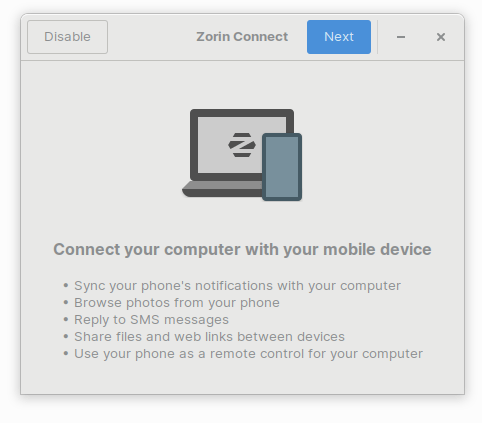
With Zorin Connect it is possible to receive the notifications that normally appear on your phone, on your desktop as well. So when there are WhatsApp or Telegram messages coming in, a pop up will also be visible on your desktop, that you can even react to or remove without touching your phone. But you also can browse the photos on your phone, share both files and links between your devices, get notifications for incoming phone calls and SMS messages on your computer and you can even use your Android phone as a remote control to manage some software on your computer. And that’s not all. You can see the battery status of your phone on your desktop, you can browse the file system remotely, launch the camera app to take and transfer images, find your Android Phone via your computer, send SMS messages from your desktop, use your Android device for changing slides in a presentation or the pages in your LibreOffice document, it provides a remote control function for your media player and you can use your phone as a touchpad or keyboard. That’s all pretty great in my humble opinion.
If you like to read more details about Zorin Connect then read my article “How to Connect your Android phone to Zorin OS with Zorin Connect“.
How to Connect your Android phone to Zorin OS with Zorin Connect
Messaging – Telegram
Probably the most famous messaging application is WhatsApp. But although something is well known and used by most people, it does not necessarily have to be the best solution for everyone. My personal preference is with Telegram. It is stable, fast and reliable, it offers a nice clean interface and my wife likes it when I send her one of those big stickers of Winnie the Pooh, Alf or funny cats, instead of these small standard emoticons. And there is a real native desktop application for Linux, which I think is great. Oh, and you can use timer based self-destructible messages.
You can find Telegram for Linux here:
Productivity
Office – LibreOffice
Well, what can I say here? Everyone who is interested in Linux and Open Source knows this very complete suite of different office applications. In my opinion, LibreOffice is fantastic and in some respects better than the competitor from Microsoft. The only thing is that the applications in this suite might be overwhelming for some of you. For example, my father thinks it is less pleasant to work with LibreOffice due to the immense number of options and a kind of old-fashioned and cluttered interface. For him, for example, the WPS Office looks a lot nicer and the compatibility with Microsoft documents is even slightly better. But for me personally LibreOffice is still the king for Linux.
You can find more about LibreOffice here:
To Do – Super Productivity
Many of you who regularly read my blogs know that I use productivity applications a lot, such as to do lists, note taking apps and Kanban boards. Until recently one of the apps for Linux that I was using was the fantastic Linux application Planner. But a while ago I was made aware of a to-do application for Linux called Super Productivity. Super Productivity is incredible. It has many of the functionalities that Planner has, but also has some unique features that I have not seen much in other to-do applications, which makes this app in my eyes a superb tool.
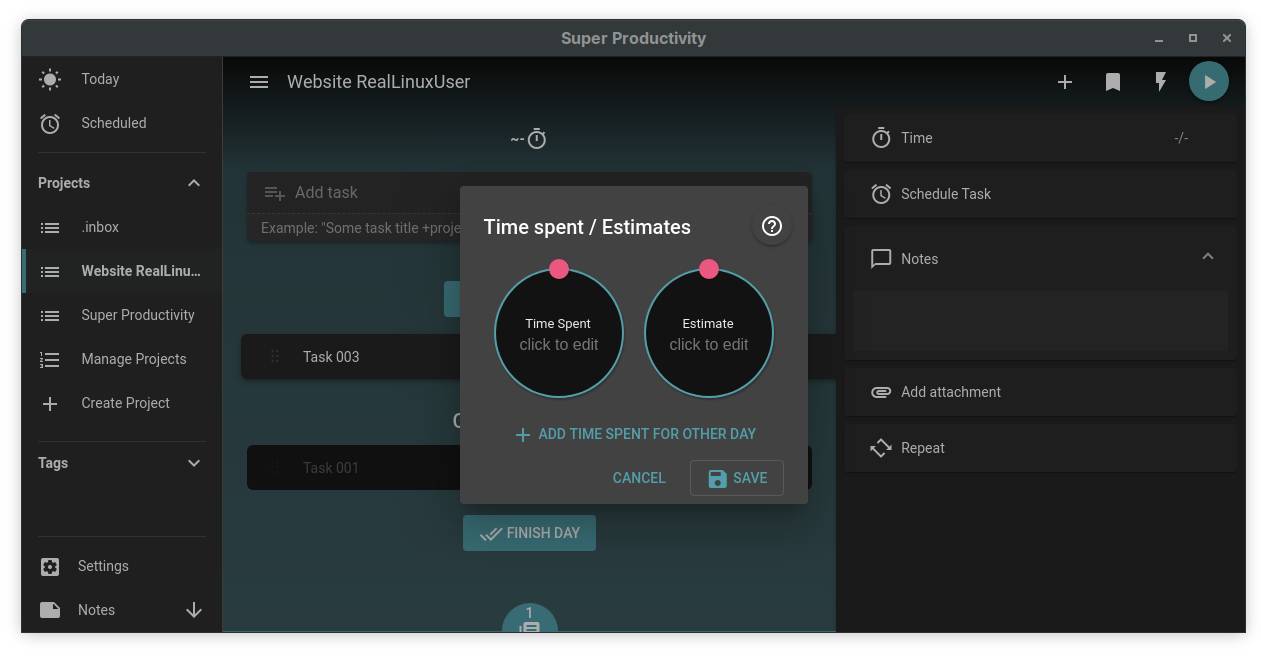
Super Productivity is a seriously good and ingenious free tool available for Linux, but also for Windows, macOS, Android and as a web application, created by Johannes Millan, who works as a freelance web developer. Super Productivity has a very extensive set of functionalities for planning, tracking and summarizing your activities. But it also offers supporting tools to take care of yourself, like a Pomodoro timer and a break reminder. And what about the other side of productivity, procrastination? Yes Super Productivity even has the procrastinator in mind as well, so you don’t waste valuable time. Next to some of these unique selling points, there is even more. What do you think about integration with professional tools like GitHub, GitLab and Jira? Yes it is available for your coding needs as well.
You can find more about Super Productivity here:
https://super-productivity.com
Or read my review of Super Productivity in my article “Super Productivity is an extremely powerful To Do app for Linux“.
Super Productivity is an extremely powerful To Do app for Linux
Personal project management – Zenkit Base
For the Clarify, Organize, Reflect and Engage steps that I follow for my productive life, I prefer to use a Kanban solution, which helps me to visualize the organization and planning of all my actionable items. So, for all my personal projects I create separate Kanban boards and in each Kanban board I manage my work by moving activity cards between Backlog, To Do This Week, To Do Today, In Progress and Done.
There are many Kanban software solutions available for the mainstream macOS and Windows desktop operating systems and the most important mobile operating systems, free or paid, and professional or more focused on personal use. Unfortunately, the range of open source Kanban applications for Linux is less extensive, and if you find them, most of them require you to do a fairly complex setup of a private server or web hosting solution. There are lots of closed source Kanban solutions out there that can be used within a browser in Linux, like Zoho Projects, Trello and Meistertask. But if possible I like to have the option of a native Linux installable application. Zenkit is one of my favorite closed source commercial solutions (with a free version with limited but very usable options) that also offers a Linux application.
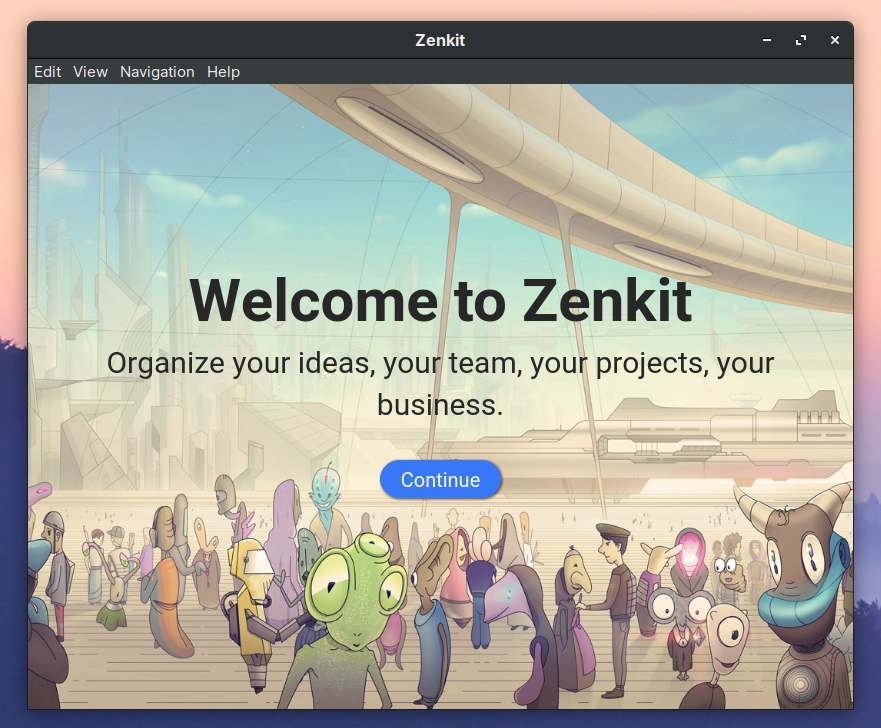
Zenkit offers much more ways of presenting your task data than only a Kanban board, like a List view, a Table view, Calendar and also offers Hierarchy, Mindmap and Team Wiki functionality. This makes Zenkit a really powerful piece of software. And based on the same data you simply switch between different scopes. Zenkit offers activity tracking, team collaboration, notifications, labeling, prioritization, planning, alerting, creating subtasks, creating checklists and to-do lists, smart filtering, bulk actions, aggregations, task assignment, comments and offers different templates and the list goes on and on.
In my article “What is Kanban and How to use Kanban in Linux” I provide much more information on how to install, set up and use Zenkit.
In my article “How I manage my productive life in Linux” you can read more on how I integrate this application in my productivity workflow:
On the Zenkit features page you can find an extensive overview of all the features available:
Note taking – Joplin
For many years I used Evernote as my digital brain, or my permanent storage functionality for long time reference and note taking. I still think Evernote is a powerful note taking application, with a lot of flexible functionalities. But because I came into contact with Linux, my search for an Evernote alternative for Linux started. And I found it in Joplin!
In my humble opinion Joplin is by far the best open source, platform independent, subscription free, and cost free note taking tool, natively available for Linux, but also on all mobile devices, with sync capabilities with various cloud services including Nextcloud, Dropbox, OneDrive, WebDAV or the file system.
Joplin is great in my opinion and offers all the possibilities you can imagine for capturing various kinds of notes. In the following Youtube video the channel Eevnos Linux gives a clear explanation of the possibilities of Joplin and his enthusiasm corresponds with my own enthusiasm.
In my article “How I manage my productive life in Linux” you can read more on how I integrate this application in my productivity workflow:
If you want to find out more about Joplin go to the following website:
Creativity
Color Management – DisplayCAL
When you are serious about photography and image editing, it is very important that your monitor displays colors accurately and with the correct brightness, tone and intensity. Just think what happens when the screen is set too dark. Then your photo seems darker than it actually is. Based on that perception you adjust the brightness of the photo mistakenly to the bright side to make it visually match what you expected. If you now have the photo printed at a professional lab, the end result will be an overexposed image. To avoid these kinds of mistakes you have to objectify your use of colors. So if color accuracy is important to you, the first step in your photography workflow should always be the calibration of your monitor with a device intended for that purpose, also known as a colorimeter. I use an old Spyder 3 pro myself on the hardware side and DisplayCAL on the software side. DisplayCAL is a display calibration and profiling application for Linux, but also for other platforms. It has screen accuracy in mind. The software is set up in a very clear way and you are guided through the process by logical steps.
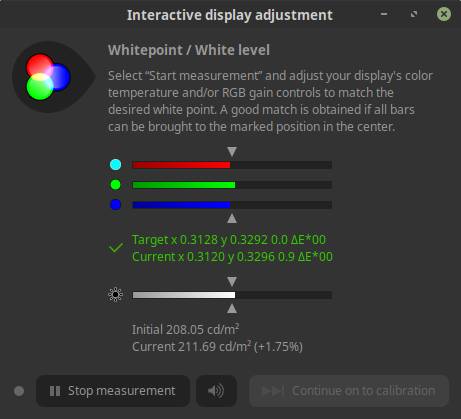
Read more in my post “How to color calibrate your monitor in Linux“.
Photo and video import – Rapid Photo Downloader
Anyone who is very involved with photography or video will automatically come to the point of thinking about a workflow, or an optimal and standardized process that includes, for example, steps for importing files, building the folder structure and naming the photo files and video files. The purpose of the Rapid Photo Downloader application is, based on your own pre-defined rules, to greatly simplify and standardize the transfer of files, so transferring your photos and videos from the memory card to the computer will be a breeze. In my opinion Rapid Photo Downloader is absolutely the best open source photo and video download software for Linux.
Rapid Photo Downloader does not try to be everything in one application, but is very clearly focused on just one part of a photo or video workflow. Where all-in-one applications are often a bit alright in everything, but do not really excel at anything, precisely because of this limited scope Rapid Photo Downloader has become a very powerful tool for the limited part for which it is intended. For me as a Linux user I am very happy that this application is available and it has therefore become my default starting point in my photo workflow.
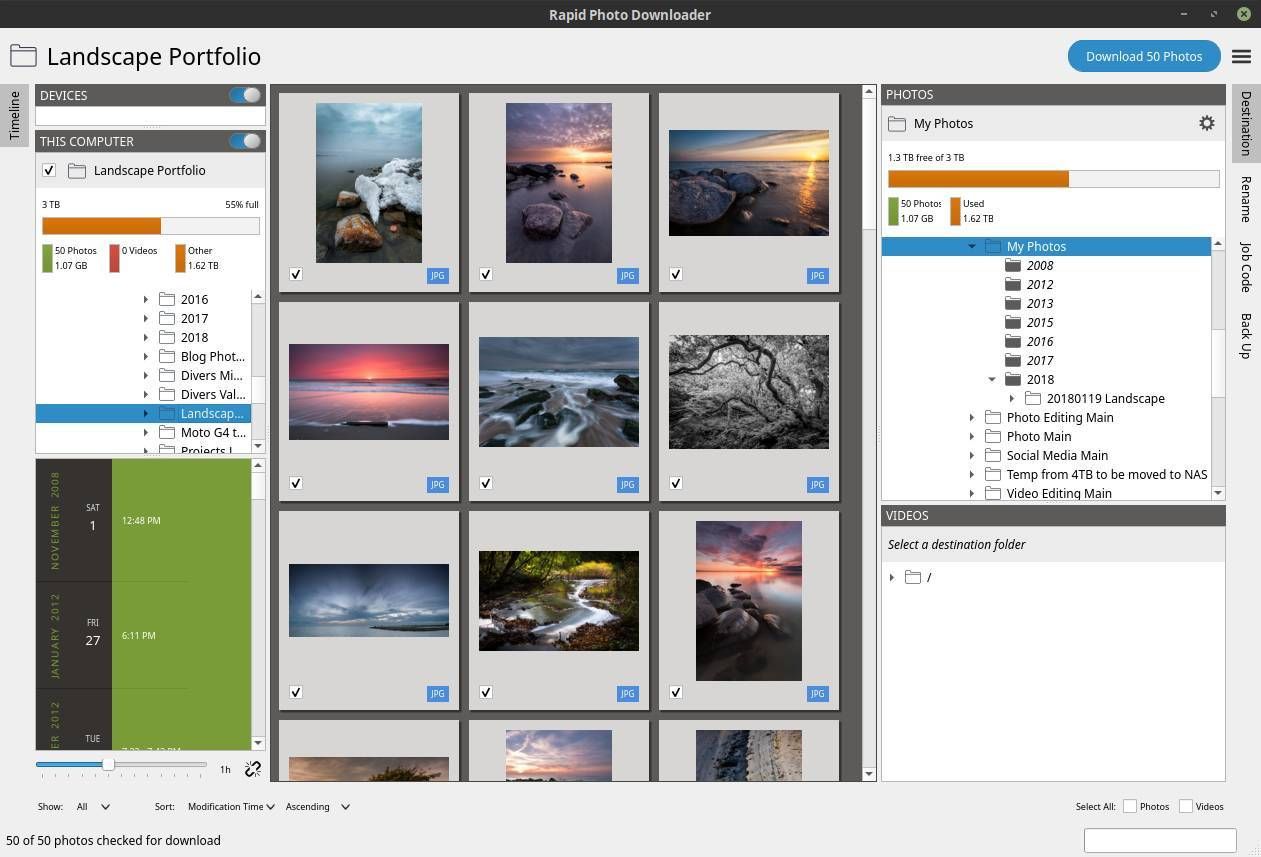
Read more in my post “Rapid Photo Downloader is the best open source photo and video download software for Linux“.
Rapid Photo Downloader is the best open source photo and video download software for Linux
Photo management – digiKam
Before I start editing my photo RAW files, which I do in darktable, I first want to clean up, categorize and select my new images with the help of ratings and keywords. digiKam enables me to do this in an efficient manner, among other things with the aid of star ratings and color indicators. digiKam is an advanced open-source digital photo management application, which provides a comprehensive set of tools for importing, managing, editing, and sharing of photo files. Within digiKam I can quickly view a collection of images, I can add a star rating of 1-5 and then I can filter on these ratings. IPTC metadata such as keywords, description and copyright information can also be added here and can be used for filters. When you are into photography and like to have professional grade managing capabilities, you should have a look at this powerful application.
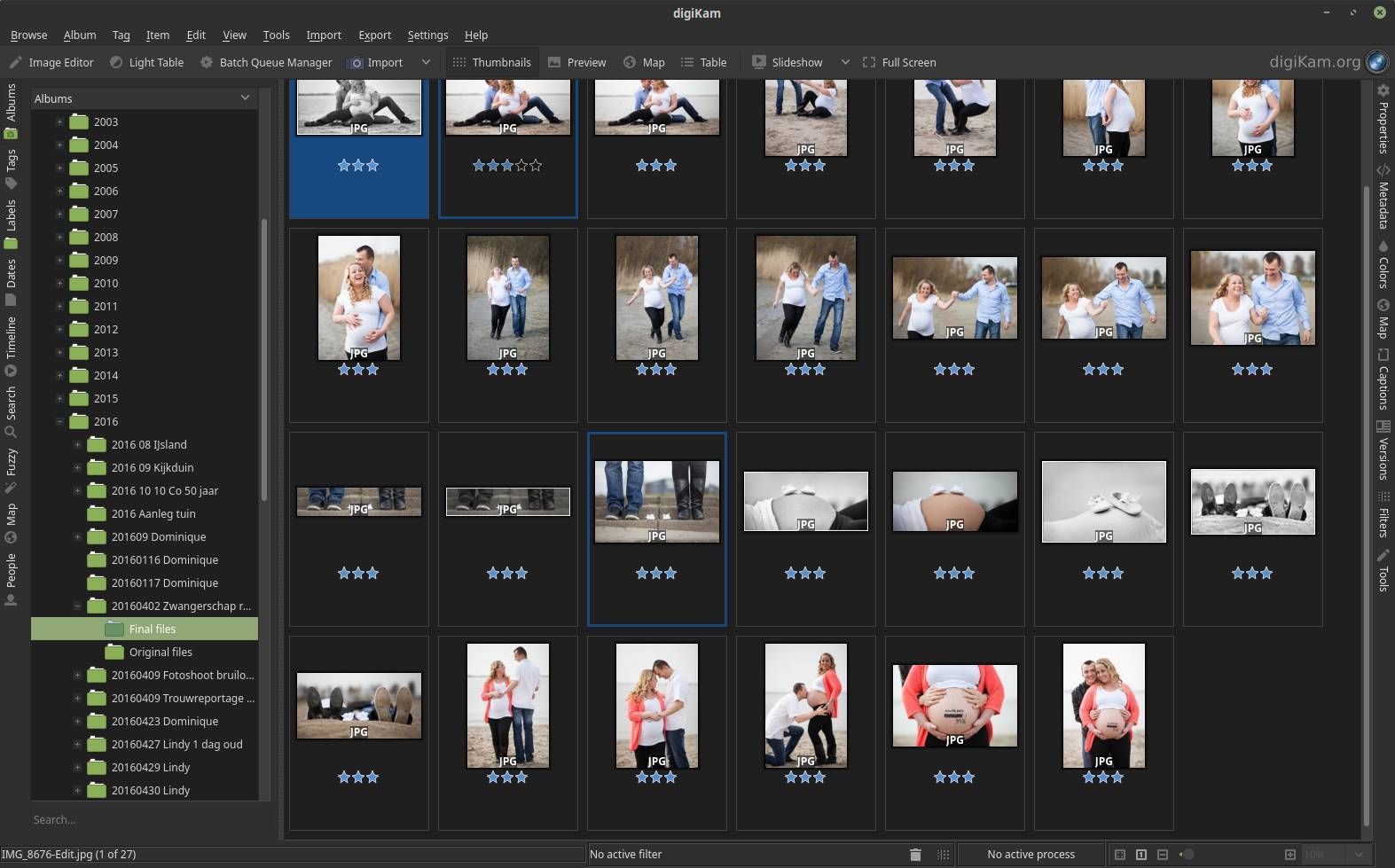
Find the digiKam website here:
Photo RAW editing – darktable
Adobe’s Lightroom has been the de facto standard for professional and serious RAW editing for Windows and macOS for years. As lovers of Linux and open source software, we do not have Lightroom at our disposal, but that doesn’t mean we don’t have similar needs when it comes to serious processing of RAW photo files and accompanying workflow support. And in my opinion the fulfillment of those needs is offered to us in the form of the powerful open source solution darktable. Anyone who appreciates a clear and professional workflow for importing, valuing, editing, synchronizing, presenting, printing and exporting and looking at the enormous range of high-quality development modules can hardly ignore darktable. In my opinion a must have in your professional workflow.
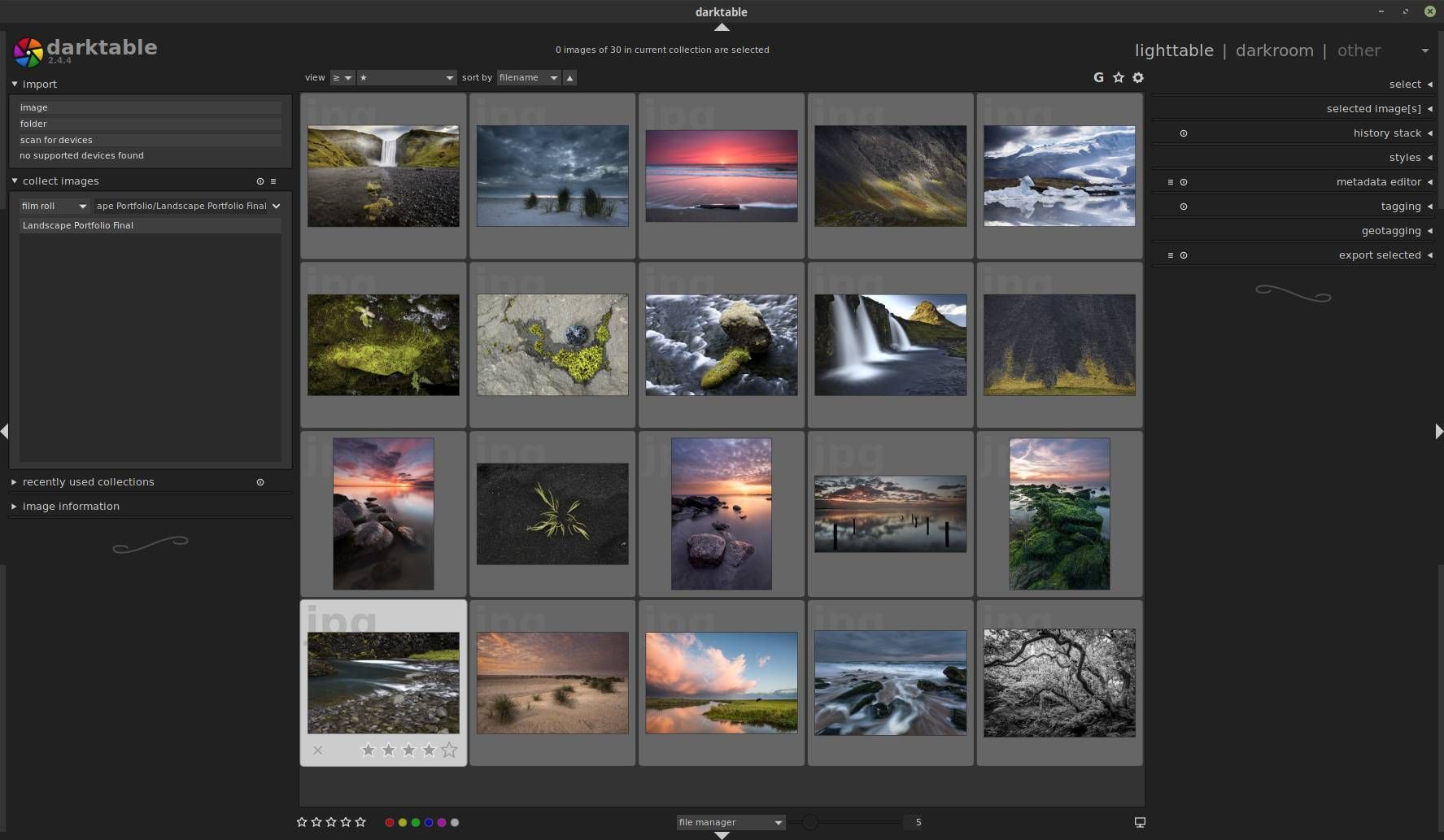
The team behind darktable has clearly been inspired by Adobe’s Lightroom and that is certainly not a wrong choice. It offers a clear interface that fits in with workflow thinking, although it is probably a bit of a chore for the novice image editor in the beginning. It therefore offers the possibility to select from the wide range of editing modules only the one you use most as a favorite, so that it meets your own needs. And you even can select a predefined set of tools based on your use case, like landscape photography.
In addition, darktable is what is called a fully “color managed” application, making it an optimal fit in a workflow where color management from conception to print plays a crucial role. For example, darktable supports automatic detection of display profiles, including built-in ICC profile support for sRGB, Adobe RGB and linear RGB color spaces. And in terms of performance, we are served our every need. If you have a relatively powerful GPU, the option is offered to use OpenCL when editing the photo files, which gives a very noticeable boost in performance.
An important feature of darktable is the non-destructive way in which adjustments are made to photo files. Each photo file is opened as a read-only image. Adjustments in contrast, color, gradient and sharpness are not processed directly in the pixels, but are recorded as metadata in a sidecar file. Actually, the set values that are mutated via sliders and graphs, are recorded separately and each time you open and look at the same photo, these mutation values are executed again, which means that you can copy these same settings to other files as well and have them edited in the same way without extra work.
Read more on photo workflow in my blog post “How to setup a Linux and Open Source based workflow for professional photographers“.
How to setup a Linux and Open Source based workflow for professional photographers
Traditional film processing but digital – Filmulator
Filmulator brings back traditional film processing in your Linux digital darkroom by using a completely different way of “developing” your digital photo files compared to other editing applications. Filmulator has its foundation based on what we call Stand Development. This type of photo development was also in the analogue film darkroom era a differentiating technique from regular development with unique resulting characteristics. Stand Development was a developing process for black and white film. The basic difference between the regular development process and the Stand Development process is the way you handle the developer fluid during the development process.
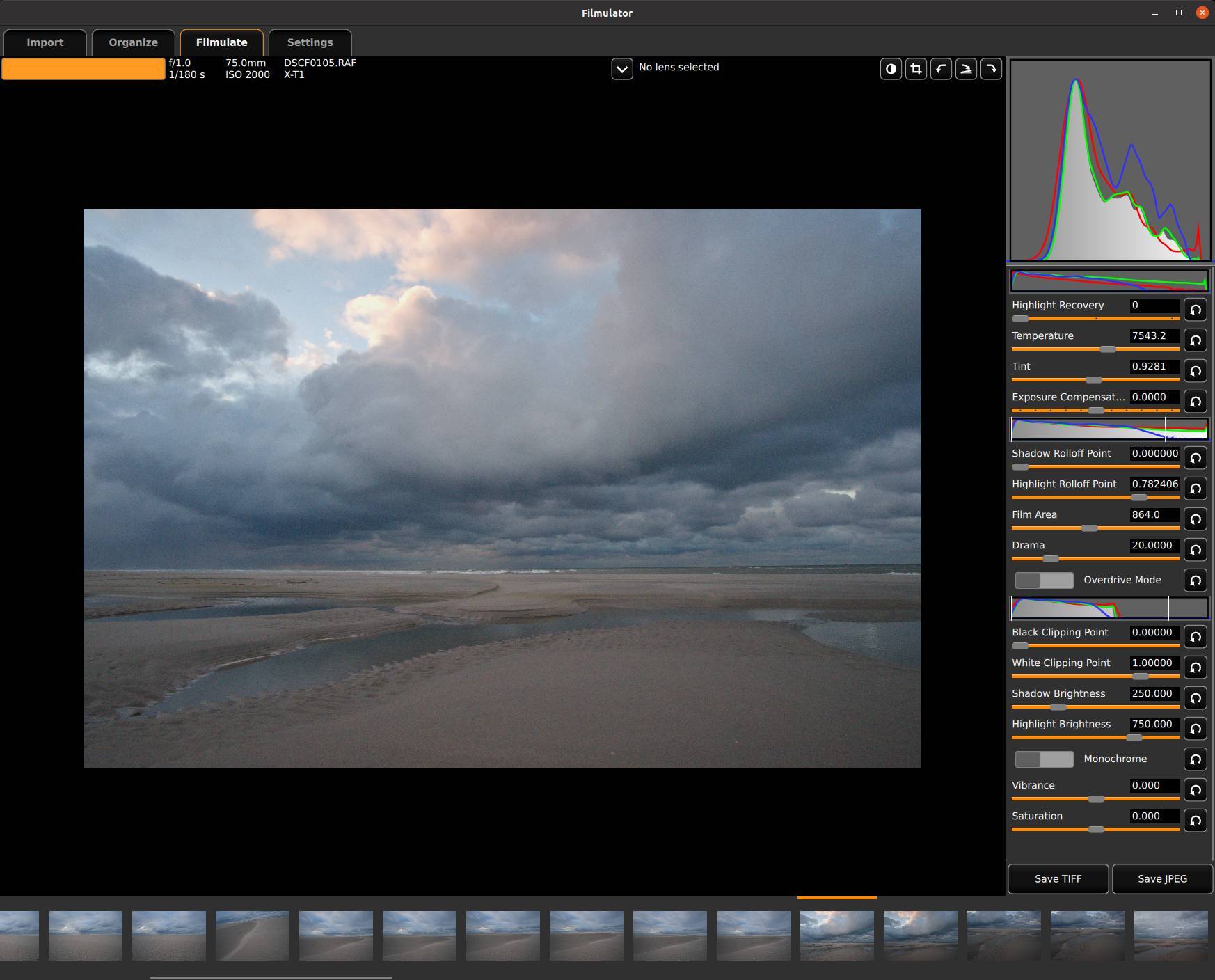
In the “old” days when you were developing your film in the darkroom you were using developer fluid, a stop bath fluid and a fixing fluid. Normally when you were developing, you were what is called “agitating” the developing chemicals, which means that during the process, the bottle holding the fluid and the film was repeatedly rotated for a couple of seconds each couple of minutes to spread the fluid evenly over the film material. With Stand development you don’t rotate the bottle holding the fluid, which has a different effect on the final results. In a normal developing process, the highlights of the exposed film were treated differently by the developer than the shadows. In the Stand Development process there is a different development balance between them, resulting in optically finer grain, a very specific balance between shadows and highlights, and the perceived effect of more sharpness than there actually is.
Filmulator is based on this very specific Stand Development technique. Well, we are not actually using digital chemicals of course, but we can use different digital sliders that use behind the scenes the Stand Development characteristics. To do this the application is designed to simulate 3 steps in the photographic process: 1) Exposure of the (digital) film, Development of the (digital) film, and Exposure of the print. You can read more on Filmulator in my article “Filmulator brings back traditional film processing in your Linux digital darkroom” .
Filmulator brings back traditional film processing in your Linux digital darkroom
Find more on Filmulator here:
Image manipulation – GIMP
For image manipulation on pixel level it is GIMP for me. GIMP, which stands for GNU Image Manipulation Program, is an incredibly versatile application and the absolute winner and must have for image creators and photo editors and manipulators that use the Linux platform. It has really powerful functionalities for photo retouching, image composition and image authoring, that offers many of the functionalities of the commercial sister Adobe Photoshop. GIMP uses a comparable user interface as Photoshop so newcomers for GIMP but who are experienced in Photoshop are able to have a quick and easy learning curve and can start right away. GIMP is in very active development.
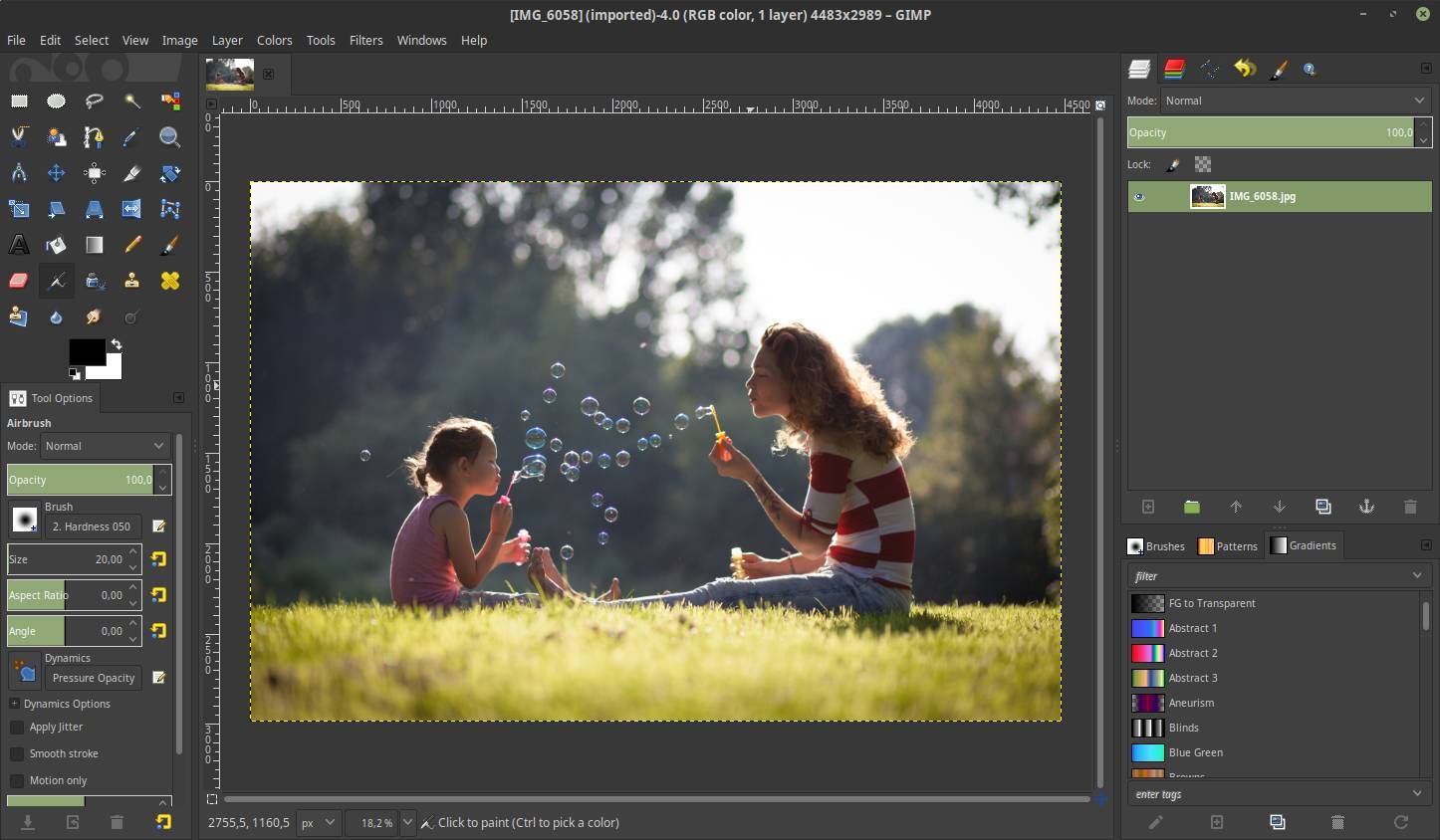
You can more information on GIMP on the following website:
Video editing – DaVinci Resolve / Shotcut
In 2021 I had a really hard time choosing between the free and open source Shotcut and the free but not open source DaVinci resolve. I really like Shotcut. The user interface, the functionalities, the relative simplicity, the clear workflow and the good results…if it actually works without crashes. I so much want Shotcut to be my prefered video editor, but because of those crashes which made me lose too much of my editing work in the last year, it made me switch to DaVinci Resolve.
And DaVinci resolve is great…really great. It is not for nothing that this professional software from Blackmagic Design is used for editing and coloring the big Hollywood blockbuster movies. And it is free to download for Linux. I really think there is nothing better that runs natively on Linux.
When DaVinci resolve was originally only a color correction tool, it was the go-to coloring tool for many Hollywood films and major TV productions. But in the last couple of years, it has evolved into a complete editing suite with next to color correction, also non-linear editing and professional audio post production. DaVinci Resolve offers a set of powerful tools for video editing, color correction, audio post production and visual effects. These functionalities are offered in a streamlined workflow. With a single click, you can instantly move between editing, color, effects, and audio.
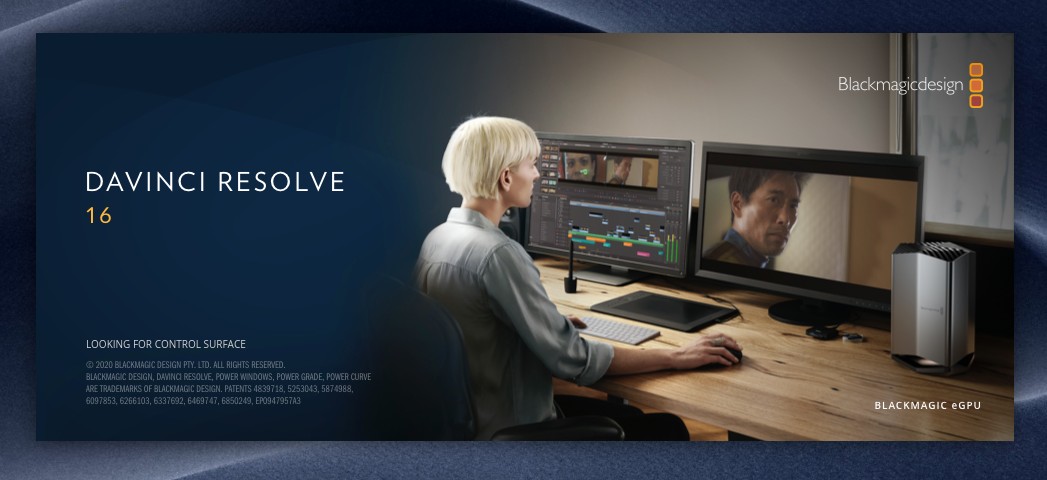
If you want to read more on DaVinci Resolve on this website read my article (although a bit old but still interesting) “DaVinci Resolve 15.1 is released for Linux“.
Or have a look at my article “How to install DaVinci Resolve on Ubuntu based Linux distros“, which I advise to read as installing DaVinci resolve on Linux is not as straightforward as other Linux applications.
How to install DaVinci Resolve on Ubuntu based Linux distros
Once installed you should have a look at my article “How to set up DaVinci Resolve for High Resolution displays in Linux“, if you use a high res display.
How to set up DaVinci Resolve for High Resolution displays in Linux
And have a look at my article “How to convert a video file for DaVinci Resolve with WinFF for Linux“, which is also described in the following section, which you need to convert your video files to be able to use in DaVinci Resolve.
How to convert a video file for DaVinci Resolve with WinFF for Linux
Installing, setting up and using DaVinci Resolve is a bit of a hassle when you start and it also has a kind of steep learning curve, but if you are serious about video editing or just an enthusiast, this piece of software is worth it.
Video Conversion – WinFF
I really enjoy video editing. As described above, In the past I used Shotcut as my main Non Linear Video editing software for Linux, but because of the issues described above, I pointed my attention to the highly professional DaVinci Resolve from Blackmagic Design, which has a free tier for Linux. And this is not a completely stripped-down version of their commercial product, but offers almost all the functionalities that the paid version contains. But when you use the free version of DaVinci Resolve under Linux, the problem is that most video capturing devices store the video data in a format that can’t be used directly in DaVinci resolve without first converting it to a format that DaVinci Resolve can work with. This is a problem that in theory only is the case for the free version for Linux, but I read in a lot of discussions on the internet that these issues also occur for the paid version and even for both versions on macOS and Windows. Personally I was in trouble with both the video files coming from my Fuji X-T1 and Motorola G7 mobile phone. When I tried to import my video files, DaVinci Resolve only showed the container but no actual video or sound was available to work with.
DaVinci Resolve likes it when you convert your video material, like MP4, MKV or MOV into a format that can be used by this application. There are different solutions for that. For Linux there is a command line tool available named FFmpeg, which is a cross-platform application to convert all kinds of audio and video. But the problem for a lot of video enthusiasts is that they are visual people and like to edit video and not type complex and lengthy terminal commands each time they need to convert footage. But there is a great graphical solution available called WinFF which uses FFmpeg behind the scenes, but offers a much more friendly interface and a simple platform to drag and drop video files and do batch conversions. The idea is to add a one time FFmpeg command in WinFF and after that you can convert multiple video files in bulk from the graphical user interface.
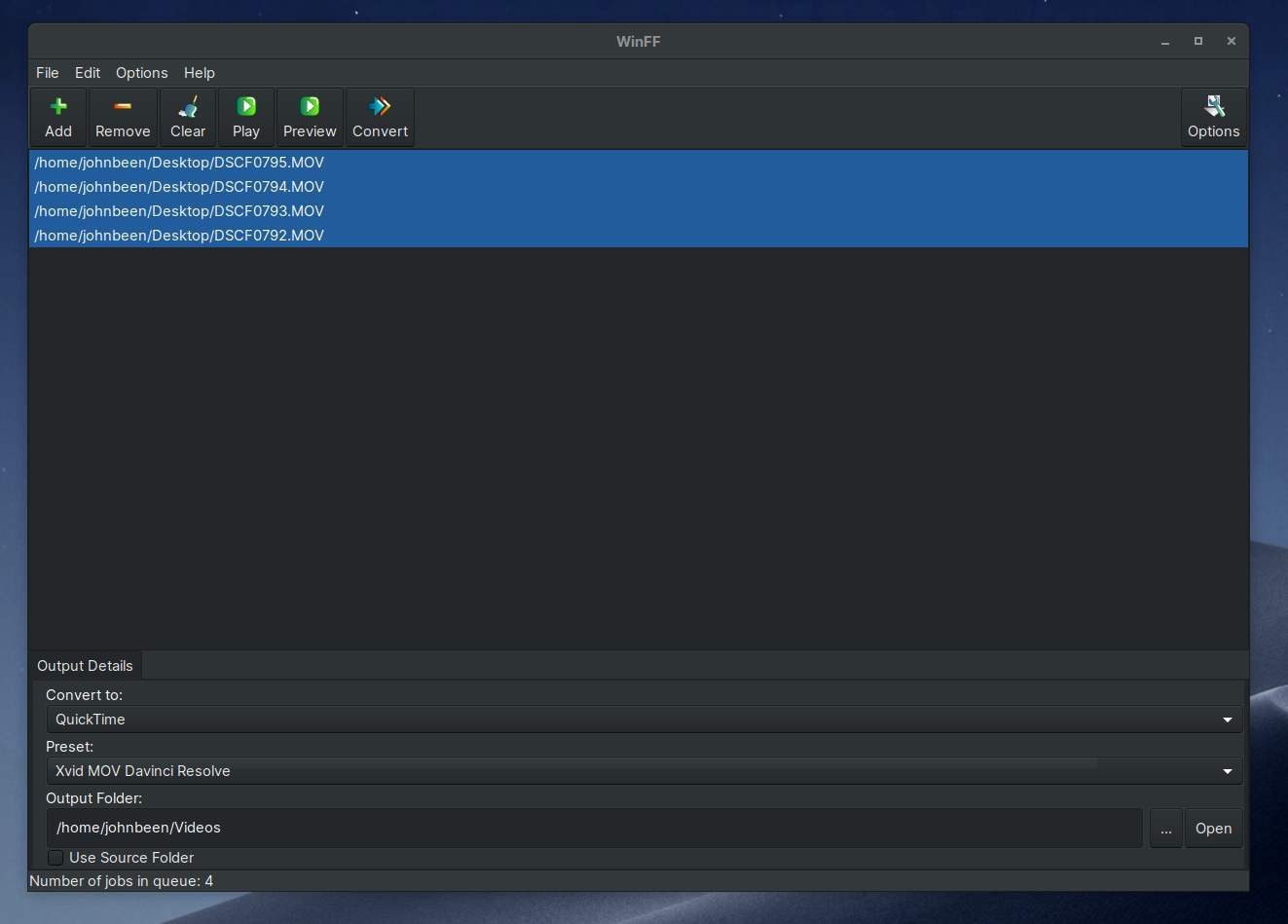
You can find more on how to use WinFF to convert your video material for DaVinci Resolve in my article “How to convert a video file for DaVinci Resolve with WinFF for Linux“.
How to convert a video file for DaVinci Resolve with WinFF for Linux
Desktop publishing – Scribus
Most people will probably agree that Scribus is the best desktop publishing application for the Linux platform. Scribus is a powerful page layout program for both amateurs and professionals. It is professionally being used for magazine creation, book publishing and manufacturing packaging material and product manuals. Scribus has a very friendly, logical and intuitive interface, although it takes some learning time to get real grips with it because of its extensive functionalities. Scribus offers professional desktop publishing features, like CMYK colors, spot colors, ICC color management and versatile PDF creation. But Scribus also offers powerful vector drawing tools so you can work with shapes, lines, colors, gradients and patterns with all the benefits of vector based design.
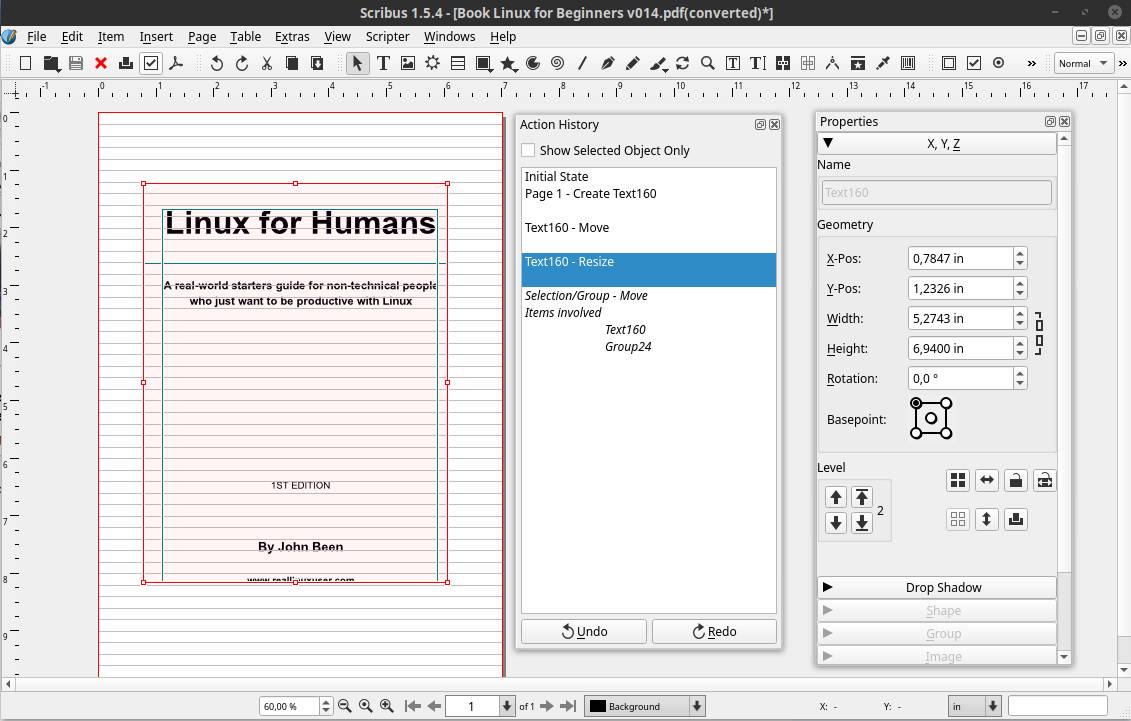
You can find more information on Scribus here:
Vector drawing – Inkscape
There are different vector graphics applications that can be used in Linux, both closed source and open source. Think about Gravit, Vectr, LibreOffice Draw and sK1. But I think the most robust vector graphics application native available for Linux is Inkscape. According to many users Inkscape is a true open source alternative to Adobe Illustrator. Some highlights of what Inscape has to offer are freehand drawing with simple paths, creating Bézier curves and straight lines, freehand drawing using filled paths representing calligraphic strokes, shape tools, text tools, transformations, z-order operations, grouping objects, layers, node editing, converting to path, boolean operations, and much much more. When people ask me to create cards or logos, Inkscape is an important tool for my needs.
If you want to find out more about everything Inkscape has to offer go to:
If you want to read more about all improvements and new functionalities in version 1.1 go to:
https://inkscape.org/news/2021/05/24/welcome-inkscape-11/
Artistic drawing – Krita
When you just like to draw, or if you are a professional matte painter that wants to use Open Source software, or everything in between, Krita is the tool for you. It is an open source drawing and painting tool for both amateur and professional concept artists, illustrators, matte artists, cartoonists and texture artists. Important to know is that this application is developed by real artists and so with their experience in mind they can build precisely what they need themselves and expect others to need. Krita offers an intuitive user interface that does not get in the way of the most important things like the canvas. The dockers and panels can be moved and adapted to suit everyone’s specific workflow. When you don’t have a steady hand or if you just do not have a trained hand yet, then there is a stabilizer functionality available for the brush you want to use to smooth out irregular lines. Krita contains various ways to soften and stabilize brush strokes. There is even a special dynamic brush with which you can add drag and mass. And additional community created brushes can be added as well. If you are creating comics there are built in tools to create comic panels and text bubbles. And a while ago 2D animations capabilities were added to the tool set.
If you want to see what a real artist can do with Krita then you must have a look at what the amazing comic creator David Revoy produces in his complete Open Source based workflow. David Revoy is working only with free and open source software on his also free and open source webcomic project Pepper&Carrot he started in April 2014. He is in my opinion an important role model for what is possible with free and open source software. And the developers of Krita think that as well as they use his art in the Krita splash page, but also include David’s custom brushes as standard.
You can find more about Krita here:
Book writing – Manuskript
Already a while ago I started with bringing one of my dreams into action, which is writing a book about Linux for beginners. I hoped to finish this book and publish it in 2020, then in 2021, but because of a bit too busy life, I now hope to do this in 2022. I expect it will not be a global bestseller, but I hope to support some recent switchers and those who still have doubts in their Linux related decisions in an accessible way. Of course I can do all my writing directly in LibreOffice Writer, but sometimes it is better to first carefully structure your thoughts and actually work from this structure. A very good application for this way of working is Manuskript. Manuskript is a unique text editor specific for writers. You can organize your thoughts and snippets in a hierarchical manner. You can get rid of all distractions while writing. You can set personal goals in word count or time. You can use the snowflake method to grow your ideas into a book, by leading you step by step and asking you questions to go deeper. Manuskript is a perfect tool for those writers who like to organize and plan everything before writing.
You can read more on Manuskript here:
http://www.theologeek.ch/manuskript/
Tools
Reduce eye strain – SafeEyes
Much has been published for years about computer use and its harmful consequences if we do not implement proper measures for ourselves to limit excessive computer use. Next to the consequences of minimizing the amount of blue light in the evening, we also have to deal with looking at a screen for too much time without breaks. I really love computers and everything that I can do and create with it, and if my wife isn’t telling me once in a while that I am already working for hours without a break on my book, my blogs, my apps, or my photos, I keep sitting there forever. But last year I found SafeEyes which is a simple but very effective application for all Ubuntu based Linux distributions, like Ubuntu, Kubuntu and Linux Mint.
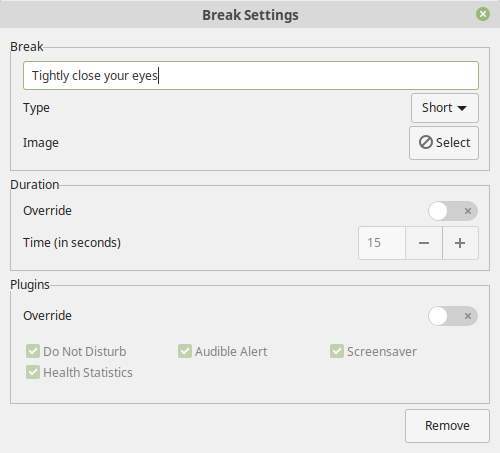
The SafeEyes application is a reminder app that helps you to have a break once in a while to give your eyes and body some rest. But it is not only doing that. In each short break it offers simple exercises like “Roll your eyes a few times to each side” or “Rotate your eyes in clockwise direction”, but also “Walk for a while”. On that moment the screen goes black and you can’t do anything else but do some exercise. Of course there is a skip button, but the whole point of SafeEyes is to help you think about the important health related things in life. But really cool is that you can define your own exercises as well.
Read my article “How to reduce eye strain and body strain with SafeEyes for Linux” to find more on how to install and set up SafeEyes.
How to reduce eye strain and body strain with SafeEyes for Linux
Screenshots – Shutter
As a blogger, for my website www.reallinuxuser.com, but also as a writer for my book in progress, I use a lot of screenshots to support my texts in a visual way. And in my opinion Shutter is the best screenshot tool for Linux that supports my requirements. If you are a writer of technical manuals, writer of courses, or blogger about technology, and you need a tool that can capture parts of screens or complete windows fast and easily and in high volume, but also enables simple edits directly on the captured result, in my opinion Shutter is the best choice for those needs.
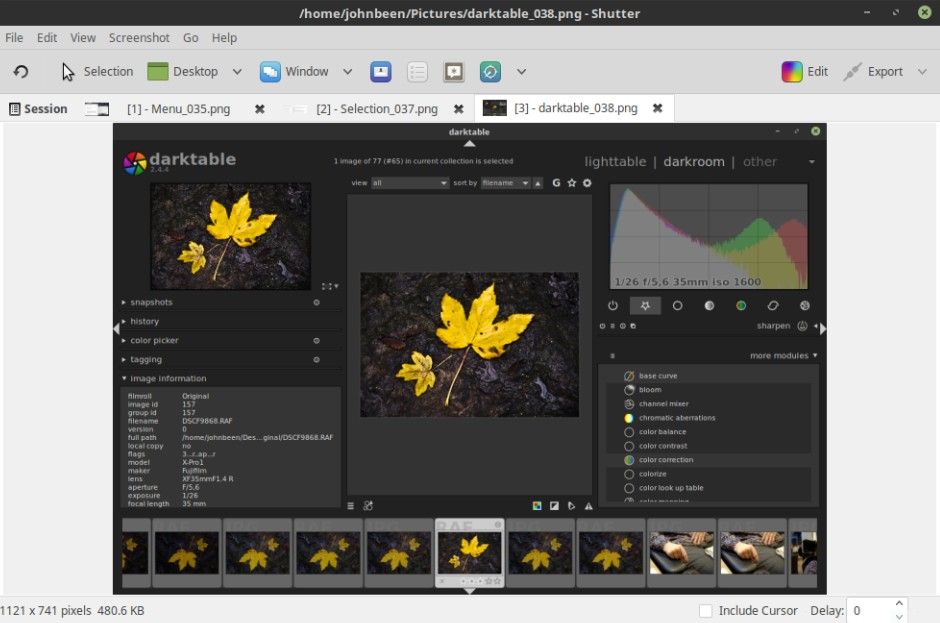
Read more in my post “Shutter is the best screenshot tool for Linux“.
PDF Reader – Evince
For the non-Linux world, Adobe Acrobat Reader is the world standard for displaying, printing, annotating and signing PDF documents. According to many Linux users, Evince is the best alternative for such functionalities for the Linux environment. Evince is a document viewer that can handle many single page and multi page document formats like PDF using the Poppler backend, Postscript using the libspectre backend, Multi-Page TIFF, DVI and DjVu using the DjVuLibre backend. Evince has a very friendly user interface, within which it is easy to navigate through a clear hierarchical and cascading chapter structure. Evince can handle form based documents and filled in forms can be saved as a new PDF document.
You can download the Evince Flatpak here:
https://flathub.org/apps/details/org.gnome.Evince
PDF Editor – LibreOffice Draw
Mostly we need software to just read PDF files. But what if you want to edit an existing PDF file. LibreOffice Draw can handle PDF files very well, whether it is an individual page or a document with multiple pages. Draw is able to edit documents that have been made with, for example, a word processing program or a presentation program, on an element level. Page components can be selected and can then be manipulated, such as text format, color and size. LibreOffice Draw is a great solution for these kinds of manipulations.
Music management – Clementine
There are quite a lot of music solutions available for Linux. I probably tried most of them. My music files are on a Synology NAS and I hoped to find a music player and organizer that can handle files on a NAS reliably and fast. A lot of applications seem to be very slow when opening the application, because each time they need to build up the file overview from scratch. And with more than fifty thousand music files, this can take a while. In my opinion Clementine handles large music libraries best and works perfectly together with NAS based storage. And it works perfectly fine with my Apple iPod Classic as well. Clementine is a great piece of software.
You can find more on Clementine here:
https://www.clementine-player.org
You can download the most recent version of Clementine here:
https://flathub.org/apps/details/org.clementine_player.Clementine
Home administration – Homebank
I am a relatively organized person and I like to keep track of my personal finances to see where the money is going. There are some nice software solutions available for personal finance management, but in my opinion Homebank offers the most simple and clean interface, robust functionalities and good interactive graphical representations of my financial status. Homebank has been translated by the community in more than 50 languages and can be set up for the situation in specific countries. Homebank has frequent releases and an active user community. It has good import functionalities, recognizes duplicate import candidates, has robust category management, makes it easy to change multiple financial items at once, offers nice drill down interactive reports, etc. Homebank suddenly makes financial administration a lot less stressful and boring and even fun to do.
You can find more on Homebank here:
Learning
Zettelkasten – Zenkit Hypernotes
Stop writing notes. Start creating knowledge. That’s where the Zenkit developers are trying to position their recent addition Hypernotes to their software suite.
I have been very busy for the past two years completing a mandatory curriculum prescribed by my employer. This curriculum included a few very tough subjects and associated mandatory exams. Like so many others, I make summaries of the material I’m trying to understand. Until not so long ago I simply briefly described the most important points that I encountered while reading and taking in the subject matter. But you often see yourself writing down many concepts repeatedly several times, so you also have to think about important connections between subjects. And specifically for those connections, a product like Hypernotes suddenly came into my mind. Hypernotes is a software product based on the Zettelkasten (https://en.wikipedia.org/wiki/Zettelkasten) method. This method is, simply described, based on making short notes that are connected at key points. When you do this very extensively, like I did for my Azure AZ-304 exam, you build a very large semantic network of interconnected topics. You build these mutual connections on the basis of hyperlinks that link the notes to each other. That way you only have to describe each concept once and you can refer to related notes from a certain piece of summary. So optimal use of text and relationships. Visually it would look like this (simplified example), in which each node is an actual note and each connection links notes together in an interactive way:
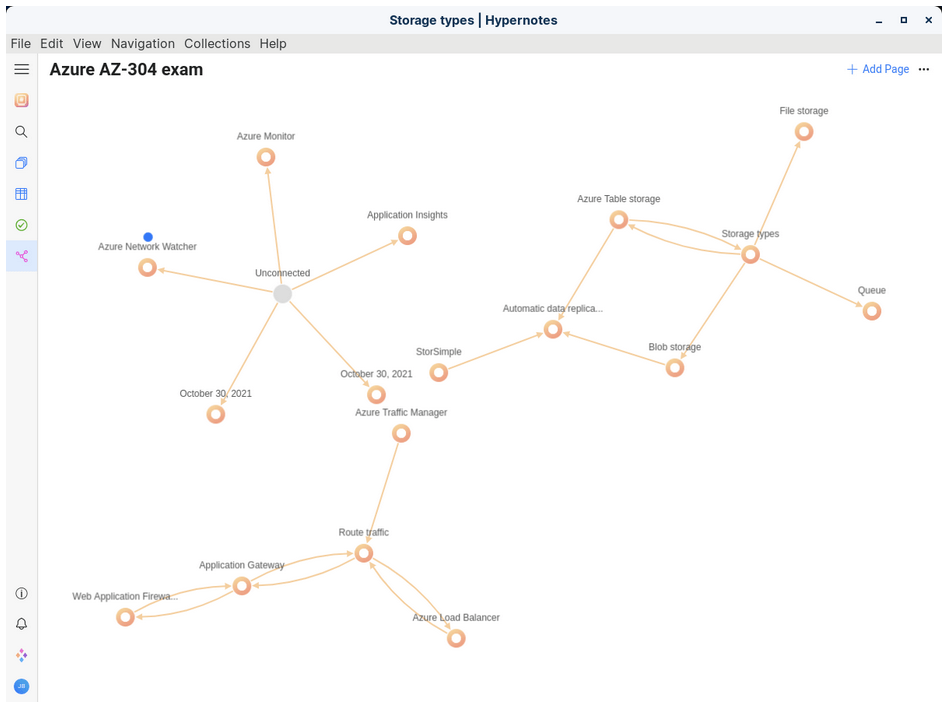
You can find Zenkit’s products, such as Hypernotes, in the Snapcraft store.
https://snapcraft.io/search?q=zenkit
Use the following link to download Zenkit Hypernotes.
https://snapcraft.io/hypernotes
Mind mapping – Minder
I use a mind mapping tool to support all my ideas, organization and decision making. I am a very visual person when I want to be efficient and effective in my research and refinement. There are many open source mind mapping applications available for Linux, but when I initially found the application Minder in the elementary OS AppCenter, I was blown away by the simplicity, flexibility, logical operation and powerful features. And now that Minder is also available via the Flathub app store for Linux, I can use minder also on my favorite Linux distribution Zorin OS. You can choose from many tree layouts, add notes, tasks and images to your nodes, add node-to-node connections, you can stylize nodes, links and connections, do quick search of node and connection titles and notes, including filtering options, and the list goes on and on.
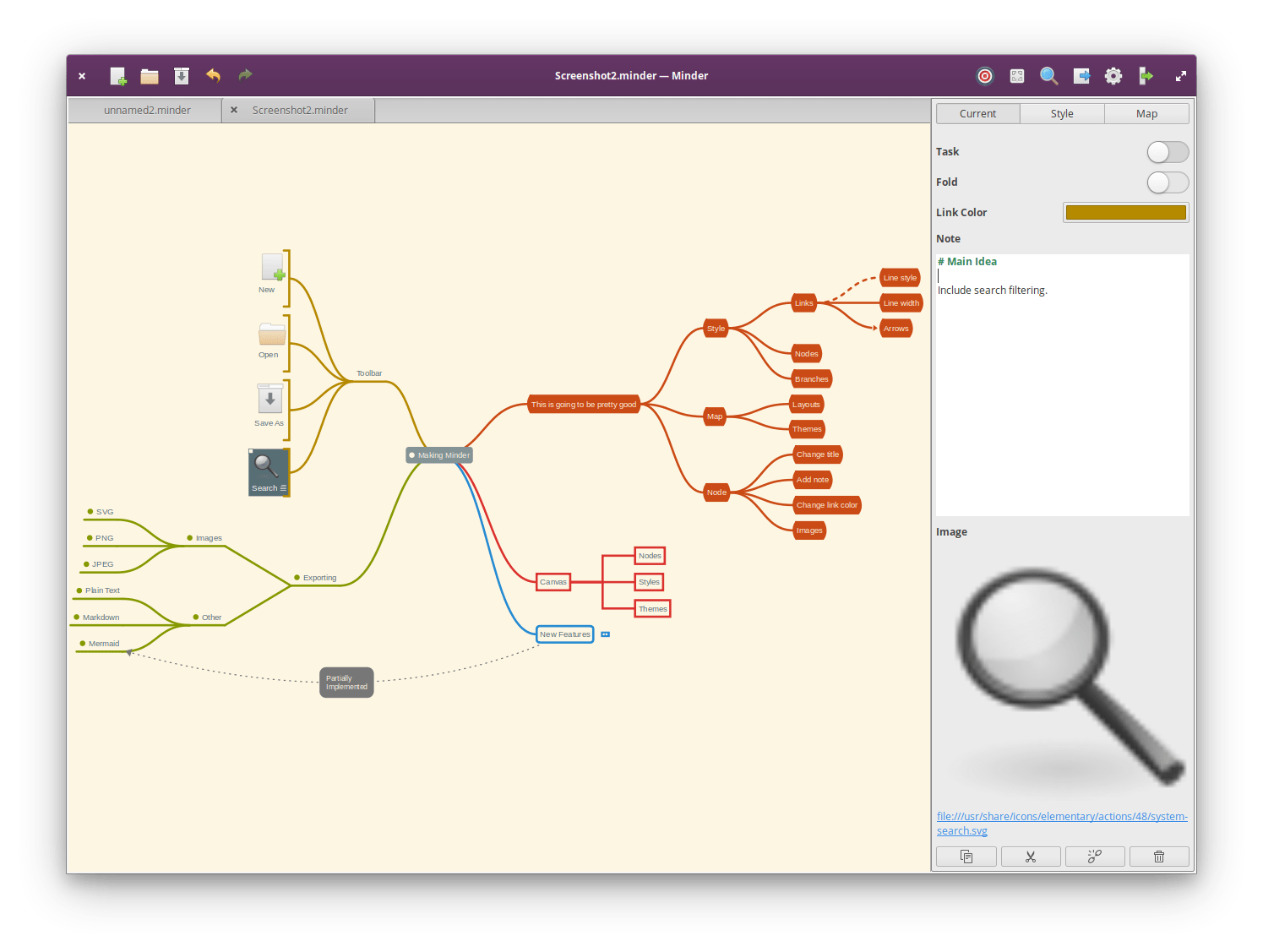
You can find Minder for elementary OS here:
https://appcenter.elementary.io/com.github.phase1geo.minder/
You can find the Minder Flatpak here:
https://flathub.org/apps/details/com.github.phase1geo.minder
Take breaks – Go For It!
Although I don’t use elementary OS as my primary distribution, I really like the simplicity of a lot of their curated apps. One of these apps is Go For It!. Go For It! is a simple but nice and clean looking productivity app for Elementary OS but can be installed in other operating systems as well as it is offered as a Flatpack package. This application distinguishes itself from other simple to-do applications by the integration of actions to be performed and time management. The app wants to help you to focus on your current task and take health breaks to start with a new task fresh.
Go For It! is a completely free and open sourced piece of software, which has been created in the Vala programming language, the language that is being used for a lot of other Elementary OS focussed apps. Also the UI (user interface) is created, according to the developer, by following some of the design principles described by the Elementary OS development team, so it fits neatly in the look and feel paradigm of the Elementary OS ecosystem.
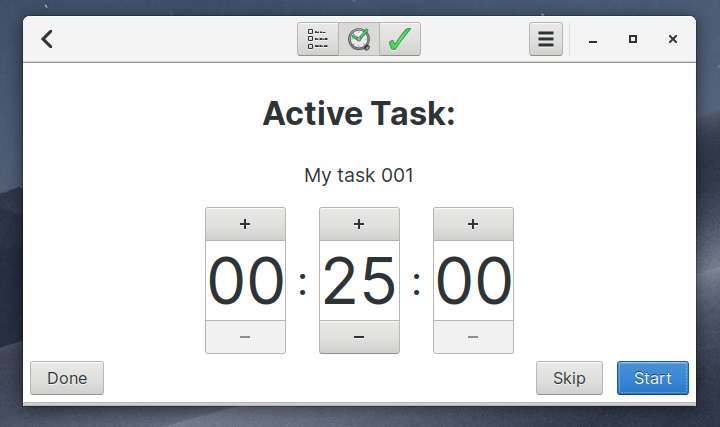
Go For It! is clearly not an extensive application with an immense list of functionalities, but has a minimalistic foundation with only the most important functionalities. Less is more fits the bill here and is in line with the simplicity of Elementary OS and its curated apps.
When you want to read more on the installation and set up process and how the application works, you can read my article “Go For It merges to-do and timer functionality in one handy productivity app“.
Go For It merges to-do and timer functionality in one handy productivity app
Development
Coding – Visual Studio Code
There are numerous coding environments available for Linux. Think about Eclipse, Bluefish, NetBeans, or Brackets. My prefered platform for web development is Visual Studio Code. This choice for Visual Studio Code is not because I think it is so much better than other development environments, but because it is convenient for me as it is being used in the courses I already finished and the ones I am still doing, so I can exactly follow along with the course material that is being presented. There are many other development environments that offer a lot of the same, so I don’t have a strong opinion here on what you should use. What I really like is the strong IntelliSense functionality that offers smart completions based on variable types, function definitions, and imported modules. Further it has Git commands built in. And there is an enormous amount of extensions available to adapt Visual Studio Code exactly to your specific requirements.
You can find more on Visual Studio Code here:
And what is my number 1 application for Linux for 2021?
And after reading through the above list, the question that some of you may be asking is which application is my absolute favorite? Well, I am addicted to taking notes. I strongly believe in the concept that your brain is not made to remember things, but to create things. We are creators, no databases. As stated before, for many years I used Evernote as my digital brain, or my permanent storage functionality for long time reference and note taking. But when I started my Linux journey and I had the fantastic challenge of finding alternative software solutions, I came across Joplin. And Joplin is in my opinion by far the best open source, platform independent, note taking tool, natively available for Linux, but also on all mobile devices, with sync capabilities with various cloud services including Nextcloud, Dropbox, OneDrive, WebDAV or the file system. I think that as Linux and open source enthusiasts we are greatly enriched with a tool like Joplin. Give it a try. You will be surprised at the powerful capabilities and flexibility that Joplin offers. I use it all day every day. Enjoy!
Final words
And so we reached the end of my best apps list and preferred app list for the year 2021. A list that is of course personal to me and can look different for everyone else. But by sharing this kind of information and the reasoning behind my choices, I hope I can help some of you start using applications that you may not have known or considered using. Next to creating my own, I also like to read these kinds of lists from others, because it gives me new ideas and keeps the drive to keep trying new things and investigating new things, alive. If you want to share your list, please feel free via my contact page.
Linux and everything around it is a fantastic hobby for me and I notice that others get excited when I talk to them about the possibilities of Linux. Only if we share our enthusiasm with friends, colleagues, etc, is it possible to turn what I believe to be the wrong image of Linux in the right direction, namely a productive, simple, beautiful and user-friendly platform, as the old image of too technical, too complex and not user-friendly has long been gone.
To end this article, I wish you fun trying out some of the applications from this list and I hope to talk to you again soon via a new article. I wish you a good end of 2021 and much love and health to your friends and family.

